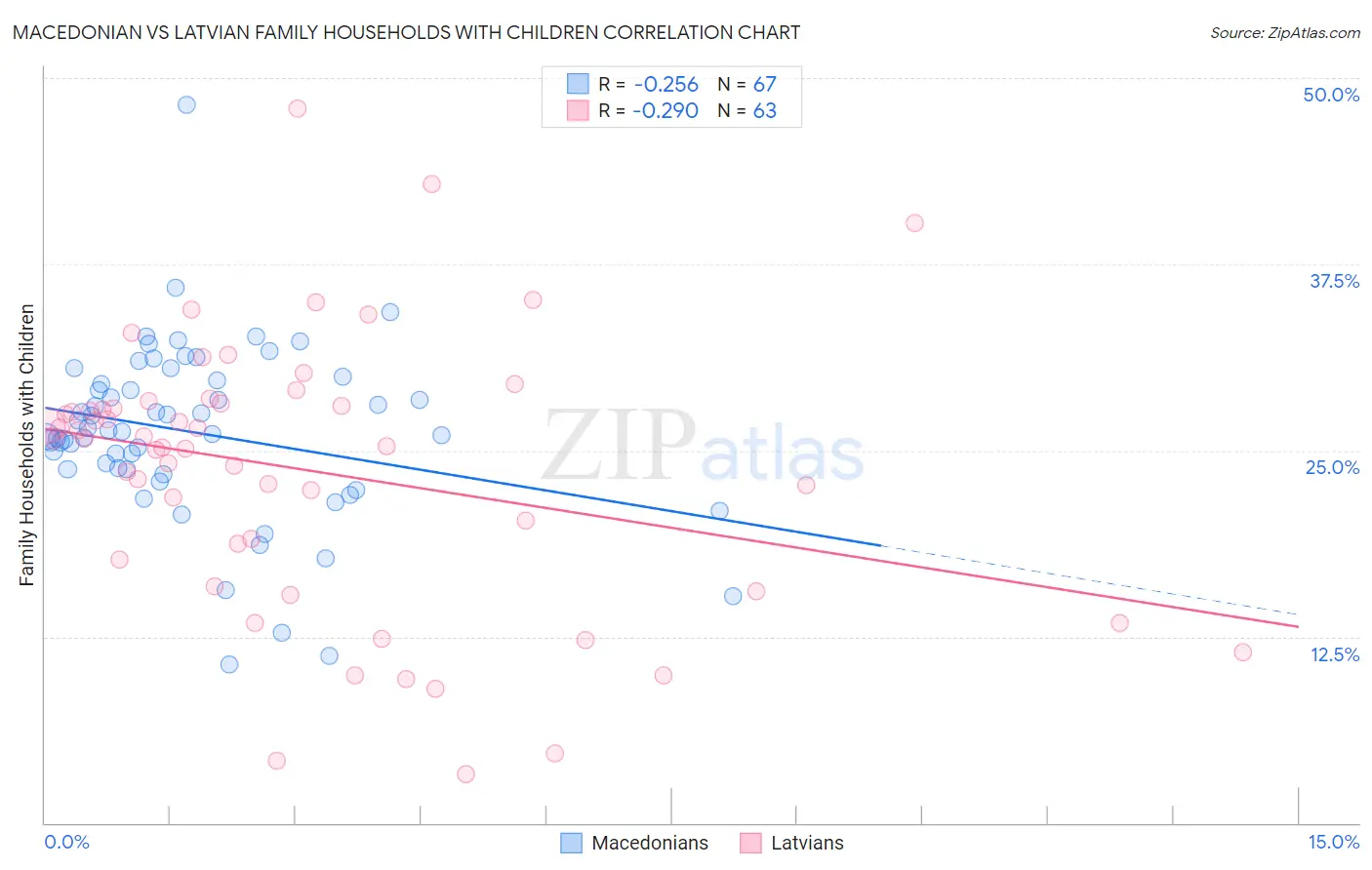Macedonian vs Latvian Family Households with Children
COMPARE
Macedonian
Latvian
Family Households with Children
Family Households with Children Comparison
Macedonians
Latvians
26.4%
FAMILY HOUSEHOLDS WITH CHILDREN
0.1/ 100
METRIC RATING
295th/ 347
METRIC RANK
26.4%
FAMILY HOUSEHOLDS WITH CHILDREN
0.1/ 100
METRIC RATING
294th/ 347
METRIC RANK
Macedonian vs Latvian Family Households with Children Correlation Chart
The statistical analysis conducted on geographies consisting of 132,577,245 people shows a weak negative correlation between the proportion of Macedonians and percentage of family households with children in the United States with a correlation coefficient (R) of -0.256 and weighted average of 26.4%. Similarly, the statistical analysis conducted on geographies consisting of 220,571,323 people shows a weak negative correlation between the proportion of Latvians and percentage of family households with children in the United States with a correlation coefficient (R) of -0.290 and weighted average of 26.4%, a difference of 0.080%.

Family Households with Children Correlation Summary
| Measurement | Macedonian | Latvian |
| Minimum | 10.7% | 3.3% |
| Maximum | 48.2% | 48.0% |
| Range | 37.5% | 44.7% |
| Mean | 26.2% | 23.7% |
| Median | 26.2% | 25.8% |
| Interquartile 25% (IQ1) | 23.7% | 17.7% |
| Interquartile 75% (IQ3) | 29.7% | 28.1% |
| Interquartile Range (IQR) | 6.0% | 10.4% |
| Standard Deviation (Sample) | 5.9% | 9.1% |
| Standard Deviation (Population) | 5.9% | 9.0% |
Demographics Similar to Macedonians and Latvians by Family Households with Children
In terms of family households with children, the demographic groups most similar to Macedonians are Croatian (26.4%, a difference of 0.020%), Armenian (26.4%, a difference of 0.030%), Black/African American (26.5%, a difference of 0.13%), Immigrants from Western Europe (26.4%, a difference of 0.13%), and Trinidadian and Tobagonian (26.4%, a difference of 0.14%). Similarly, the demographic groups most similar to Latvians are Black/African American (26.5%, a difference of 0.060%), Croatian (26.4%, a difference of 0.10%), Polish (26.5%, a difference of 0.11%), Armenian (26.4%, a difference of 0.11%), and Albanian (26.5%, a difference of 0.12%).
| Demographics | Rating | Rank | Family Households with Children |
| Immigrants | Canada | 0.3 /100 | #284 | Tragic 26.5% |
| Cambodians | 0.2 /100 | #285 | Tragic 26.5% |
| Immigrants | Senegal | 0.2 /100 | #286 | Tragic 26.5% |
| Shoshone | 0.2 /100 | #287 | Tragic 26.5% |
| Russians | 0.2 /100 | #288 | Tragic 26.5% |
| Immigrants | Sweden | 0.2 /100 | #289 | Tragic 26.5% |
| Albanians | 0.2 /100 | #290 | Tragic 26.5% |
| Bahamians | 0.2 /100 | #291 | Tragic 26.5% |
| Poles | 0.2 /100 | #292 | Tragic 26.5% |
| Blacks/African Americans | 0.1 /100 | #293 | Tragic 26.5% |
| Latvians | 0.1 /100 | #294 | Tragic 26.4% |
| Macedonians | 0.1 /100 | #295 | Tragic 26.4% |
| Croatians | 0.1 /100 | #296 | Tragic 26.4% |
| Armenians | 0.1 /100 | #297 | Tragic 26.4% |
| Immigrants | Western Europe | 0.1 /100 | #298 | Tragic 26.4% |
| Trinidadians and Tobagonians | 0.1 /100 | #299 | Tragic 26.4% |
| Paiute | 0.1 /100 | #300 | Tragic 26.4% |
| Immigrants | Trinidad and Tobago | 0.1 /100 | #301 | Tragic 26.4% |
| Serbians | 0.1 /100 | #302 | Tragic 26.4% |
| Immigrants | Guyana | 0.1 /100 | #303 | Tragic 26.3% |
| Immigrants | Bahamas | 0.1 /100 | #304 | Tragic 26.3% |